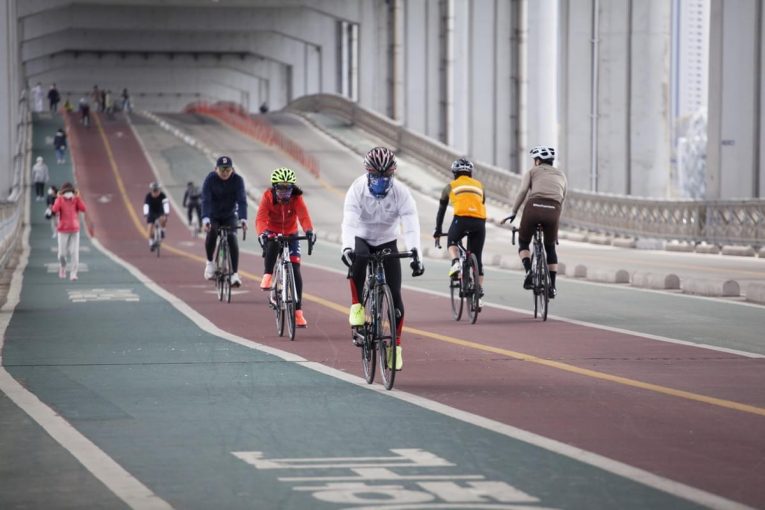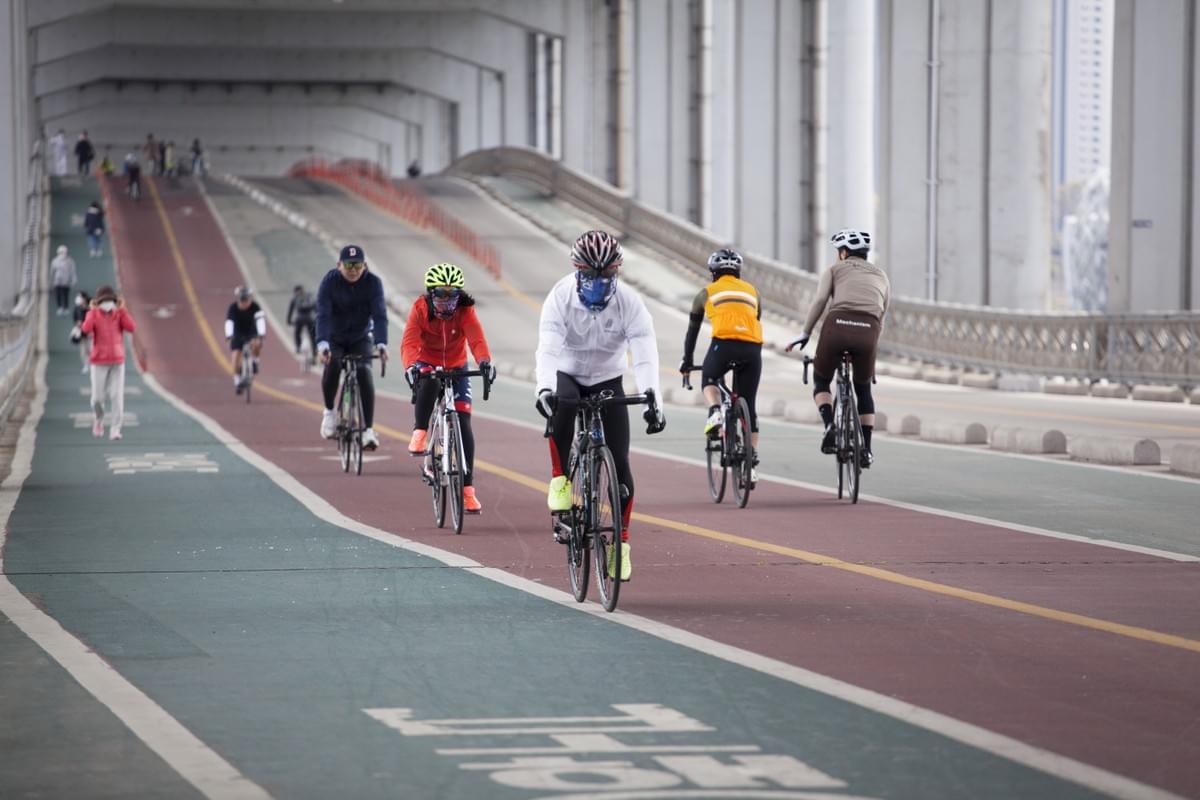

Examining whether the Recent Bicycle Boom Has Lasting Power in a Post-Pandemic Lockdown World
by Lisa Montanaro of The Bike Campaign
As summer progresses and we gear up for the fall, the burning question on everyone’s mind is what the “next normal” will look like in light of the global pandemic. There is so much uncertainty with regard to shelter-in-place orders, working from home, whether some version of in-person classes will resume for students, and more. Amidst all of this uncertainty, people are also wondering whether returning to a car-dominated society after the pandemic lockdown is the smartest choice.
Cities around the world are grappling with the same issue: how to safely reopen in the COVID-19 era. As we reemerge from lockdown, this is a perfect opportunity to examine transportation models. Public transportation systems in major metropolises like New York and San Francisco transport millions of people to work, school, and other locations each day. During this time of pandemic, people are nervous about being in such close quarters and risking exposure. But the alternative of everyone using cars also has its share of problems—increased traffic, interference with emergency vehicles, and a reversal of the unintentional benefits of reduction of carbon emissions during lockdown.
Another unexpected benefit of sheltering in place? A boom in bicycle use. Bikes have been flying off the shelves of cycling shops, taken out of storage, tuned up, repaired, borrowed, and donated. Streets have been closed to traffic and designated as cycling only zones. Cycling has been used as a way to get to work, as a form of exercise for those unable to go to the gym, or as a family activity. Eco-Counter, a Montreal-based engineering company that designs and provides bicycle and pedestrian counters, and analyzes data, measured a 21% increase in U.S. ridership from March to June 2020 compared with the same timeframe in 2019. During that same timeframe, the Rails-to-Trails Conservancy saw a 110% increase in ridership on rail-trails compared to the same time in 2019.
As we begin to think of how people will return to work, we recall traffic congestion, air pollution, and being stuck in a car. As we think of kids returning to school, visions of the old way come
 to mind—a long line of cars clogging up the street leading to the school. Not the most appealing, efficient, or safe models to return to.
to mind—a long line of cars clogging up the street leading to the school. Not the most appealing, efficient, or safe models to return to.
That’s why many cities and towns are looking to the trusty bicycle as an ideal mode of transportation. Bicycles are convenient, environmentally-friendly, and allow folks to socially distance while being active and getting to and from their destinations. Those that need an added boost of power can opt for an e-bike to ease the struggle of a long or arduous commute.
While Davis already boasts a bike loop, greenbelt paths, and copious bike lanes, Woodland is taking this opportunity to provide more bike lanes throughout town as a way to encourage residents to bicycle more as a means of transportation.
Now is the perfect time for a cultural shift. But how bold are we wiling to be? Would we consider—gasp—ditching the car?
Let’s look at what it actually costs to own a car these days.
Zipcar looked into it and reported that Americans spend an average of $345 per month in car expenses. But according to AAA, that number is low. It found that drivers actually spent an average of $706 per month owning and operating a new vehicle. AAA’s figure includes annual maintenance and repair. On top of that, you need to factor in insurance, tolls, and parking. California ranks in the top ten most expensive states for auto insurance. And parking comes with monetary costs and the non-monetary headache of time wasted looking for parking spots—a staggering 17 hours per year according to researchers. Not to mention the traffic compounded by all those drivers circling the block looking for parking.
While a bike isn’t necessarily free, it costs a lot less than a car to initially purchase and to maintain. Plus, many riders get so much exercise by incorporating cycling into their day that they can then ditch the gym membership, saving even more money.
If cost isn’t an issue for you, consider that the American Journal of Preventative Medicine reports that auto commuting stress contributes to weight gain, neck pain, higher anxiety, and harmful exposure to pollution.
For some people, the sheer distance of their commute, unsafe roads, medical conditions prohibiting cycling, and other factors make ditching the car unrealistic. But for millions of Americans, cycling offers a viable alternative. Perhaps you are now a two-car family, and are starting to realize that you could share one car. Perhaps you could put the keys in the ignition less and opt to peddle more.
Locally, if you want to donate a bike, buy a used bike, get your bike repaired, get a local Davis or Woodland Bike Map, or learn how to ride, The Bike Campaign has got you covered. Director Maria Contreras Tebbutt is a nationally certified bike instructor and is available as a resource for all things bike-related. Visit www.TheBikeCampaign.com for more details.
As we look towards a post-lockdown era, it’s time to rethink travel habits. This cycling-as-a-means-of-transportation trend is a unique opportunity to embrace the bicycle as an integral part of a community’s transport systems. Not only as a temporary panacea for the pandemic, but for the foreseeable future.
This article was written by Lisa Montanaro, commissioned by The Bike Campaign. For more information about how to “Drive Less. Ride More.,” contact Maria Contreras Tebbutt by phone at (530) 753-1125, by email at funmaria@sbcglobal.net, or visit the website at www.TheBikeCampaign.com.





